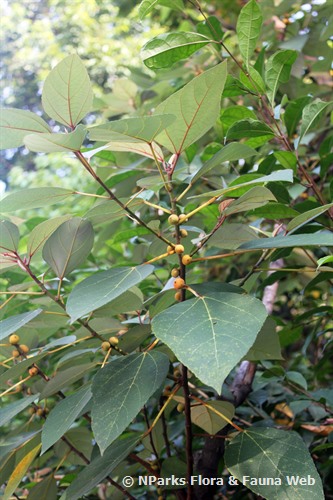
Back
Ficus grossularioides Burm.f
| Family Name: | Moraceae |
| Synonyms: | Ficus alba Reinw. ex Blume |
| Common Name: | Ara Putih, White-leaved Fig, 白叶榕 |
Name
Classifications and Characteristics
| Plant Division | Angiosperms (Flowering Seed Plants) (Dicotyledon) |
|---|---|
| Plant Growth Form | Tree (Small (6m-15m)), Shrub |
| Lifespan (in Singapore) | Perennial |
| Mode of Nutrition | Autotrophic |
| Plant Shape | Irregular |
Biogeography
| Native Distribution | Thailand, Sumatra, Peninsular Malaysia, Singapore, Borneo, and Java |
|---|---|
| Native Habitat | Terrestrial (Primary Rainforest, Secondary Rainforest, Freshwater Swamp Forest, Grassland / Savannah/ Scrubland, Disturbed Area / Open Ground) |
| Preferred Climate Zone | Tropical |
| Local Conservation Status | Native to Singapore (Least Concern (LC)) |
Description and Ethnobotany
| Growth Form | It is a latex-containing shrub or tree up to 15 m tall. |
|---|---|
| Foliage | Its spirally arranged, stalked leaves have partially leathery to papery leaf blades that are somewhat rough and hairy above, white and covered with fine hair below, oval to heart-shaped or at times 3–7-lobed, 3–35 by 1.5–30 cm, and with margins that are entire, or distinctly toothed. |
| Flowers | The plant is dioecious with each plant bearing male or female flowers. The flowers are tiny and develop within the syconium (fig). |
| Fruit | Its syconia (figs) are somewhat round to ellipsoid, covered with soft, fine hair when fresh, yellow to orange to brownish to red when mature, 0.6–1.5 cm across, and occur in pairs on the bare portions of twigs behind the leaves or at the leaf axils. |
| Habitat | It grows in primary and secondary lowland forests, forest edges, and along streams up to 1,350 m altitude. |
| Associated Fauna | Its flowers are pollinated by fig-wasps. Birds, such as the yellow-vented bulbul (Pycnonotus goiavier), eat its ripe syconia (figs). It is also the preferred local food plant for caterpillars of the butterfly, striped blue crow (Euploea mulciber). |
| Cultivation | It can be propagated by seed, stem cutting or air-layering. |
| Etymology | Latin Ficus, the commercial edible fig (Ficus carica); Latin grossularioides, like a gooseberry, referring to the superficial resemblance of the syconia (figs) to gooseberries |
| Ethnobotanical Uses | Edible Plant Parts : Edible Leaves, Edible Stems Medicinal: Its young shoots are edible. A decoction of the leaves is used to treat kidney ailments. |
Landscaping Features
| Landscaping | Its syconia (figs) attract birds when ripe. It has attractive leaves that are white below. It may be suitable for roadsides or gardens. |
|---|---|
| Desirable Plant Features | Ornamental Foliage, Ornamental Fruits |
| Landscape Uses | General, Suitable for Roadsides, Parks & Gardens, Small Gardens |
Fauna, Pollination and Dispersal
| Fauna Pollination Dispersal Associated Fauna | Bird-Attracting, Butterfly Host Plant, Caterpillar Moth Food Plant, Bat Food |
|---|---|
| Pollination Method(s) | Biotic (Fauna) |
| Seed or Spore Dispersal | Biotic (Fauna) (Vertebrates (Bat), Vertebrates (Other Mammal)) |
Plant Care and Propagation
| Light Preference | Full Sun, Semi-Shade |
|---|---|
| Water Preference | Moderate Water |
| Plant Growth Rate | Moderate |
| Rootzone Tolerance | Moist Soils, Well-Drained Soils |
| Propagation Method | Seed, Stem Cutting |
Foliar
| Foliage Retention | Evergreen |
|---|---|
| Mature Foliage Colour(s) | Green, White |
| Mature Foliage Texture(s) | Papery, Leathery |
| Foliar Type | Simple / Unifoliate |
| Foliar Arrangement Along Stem | Alternate |
| Foliar Attachment to Stem | Petiolate |
| Foliar Shape(s) | Non-Palm Foliage (Ovate, Palmate) |
| Foliar Venation | Pinnate / Net |
| Foliar Margin | Entire, Serrate / Toothed |
| Foliar Apex - Tip | Acute |
| Foliar Base | Acute, Rounded / Obtuse |
| Leaf Area Index (LAI) for Green Plot Ratio | 3.0 (Tree - Intermediate Canopy) |
Image Repository
Others
| Master ID | 1616 |
|---|---|
| Species ID | 2909 |
| Flora Disclaimer | The information in this website has been compiled from reliable sources, such as reference works on medicinal plants. It is not a substitute for medical advice or treatment and NParks does not purport to provide any medical advice. Readers should always consult his/her physician before using or consuming a plant for medicinal purposes. |

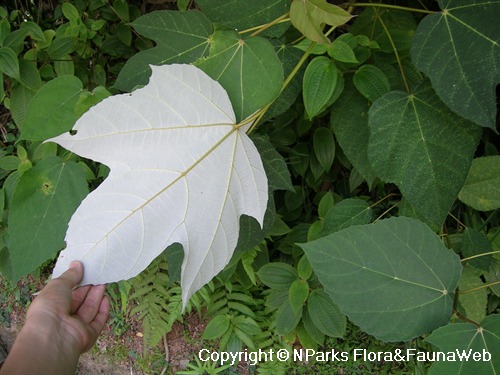
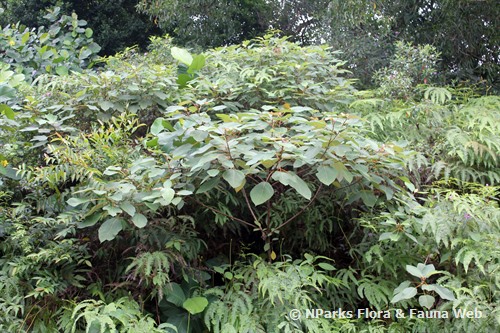
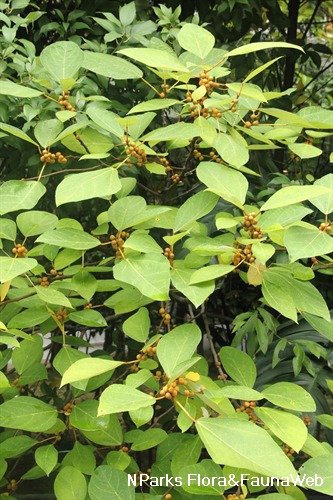
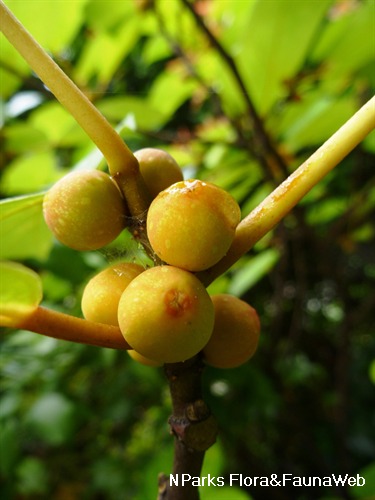
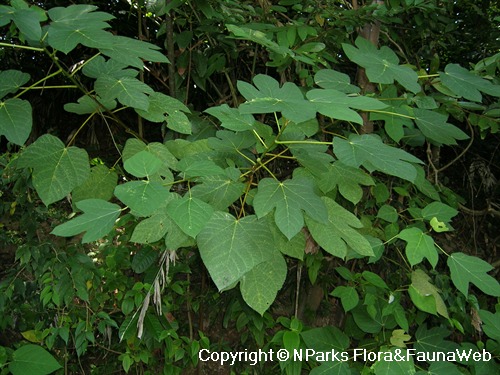
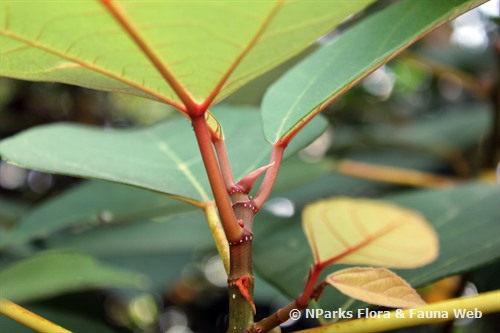
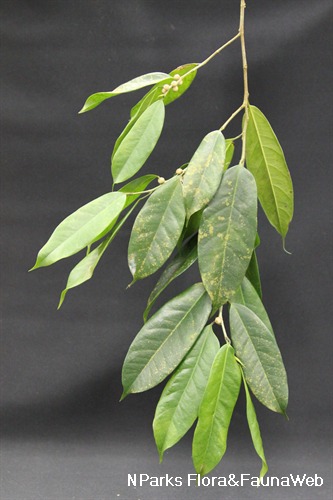
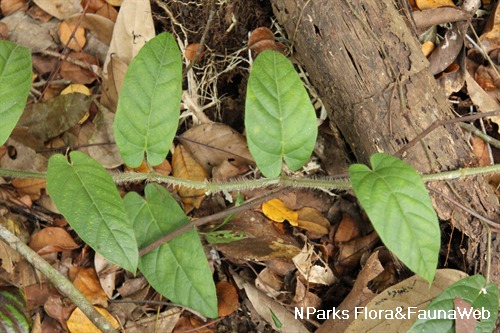
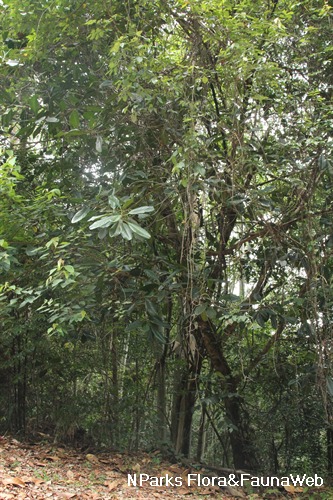
.jpg)